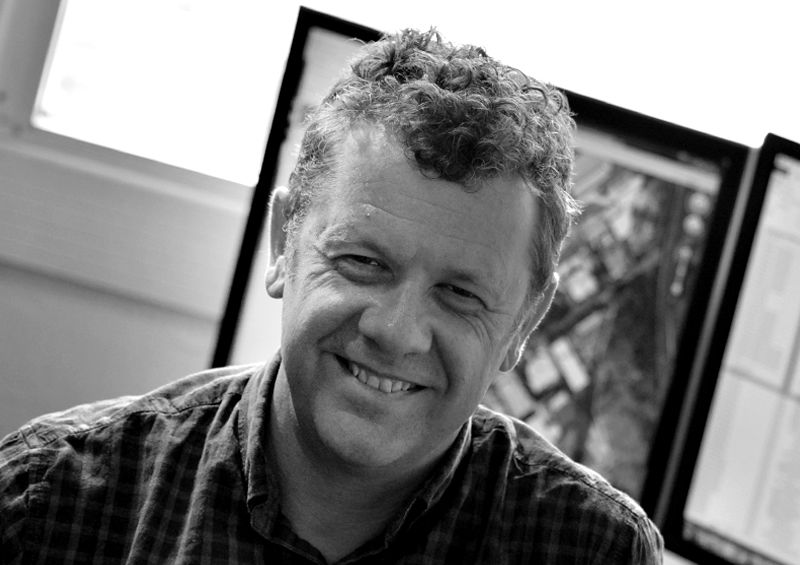The population and housing forecast for the Western Australia Outback region
Region (SA4): 510 - Western Australia - Outback (North), 511 - Western Australia Outback (South)
Published: January 2024
Version: 5.1.1
Read forecast analysis and insights for the Outback region from Australia's largest independent population forecasting team.
Detailed forecasts are available for this region
Our premium services give you detailed forecast information for this region to help you invest in the right place, at the right time.
- Forecasts by age and sex
- Single-year forecast periods
- Custom local area geography
- Forecasts of housing and development
Menu
Read the insights and analysis behind our population and dwellings forecasts for the Outback region.
About the Outback region
The Outback region is an enormous but sparsely populated and arid area covering approximately 91% of Western Australia, containing some of the most economically important mining areas in Australia, and five of the nine regions of Western Australia.
The regions throughout the outback are home to significant indigenous communities, with most remote and town-based communities based in the Kimberely region.
The regions are:
- The Kimberley is the northernmost region in Western Australia, bordered on to the north by the Timor Sea. It contains the Shires of Broome, Derby-West Kimberley, Wyndham-East Kimberley and Halls Creek. The region is an economically important area for mining responsible for a third of the world's annual diamond production. Mining also includes oil, zinc, lead and nickel.
- The Pilbara contains the shires of Ashburton, East Pilbara, the City of Karratha and the Town of Port Headland. The region is sparsely populated, with most of the permanent population based in the towns of Karratha, Port Headland, Wickham and Newman. The Pilbara is an economically important region for mining containing a number of Australia's largest mining operations, particularly of iron ore and LPG . A large number of people are employed in the area on a fly-in/fly-out basis, with numbers fluctuating according to the market value of iron ore and whether mines are in a production or development phase.
- The Goldfields-Esperance region is the largest region in Western Australia, covering an area twice the size of NSW, but with a population of only 60,000 people. Nearly 10% of the region's population is of indigenous descent. It contains a number of council areas, the largest of which are the City of Kalgoorlie-Boulder (which contains roughly half the population of the region) and the Shire of Esperance (which contains another quarter of the population).
- The Gascoyne region is in the north-west of the state, and includes the council areas of Carnarvon, Exmouth, Shark Bay and Upper Gascoyne. It has the lowest population of any region in Western Australia, with about 9,277, of whom slightly more than half live in Carnarvon.
- The Mid West region is a sparsely populated area with the vast majority of the population of 54,000 people living in Geraldton.
Key findings
Growth in the Western Australian Outback mainly around larger centres, particularly Geraldton, and cities / towns involved in servicing the mining industry and tourism.
At the base year of the forecast period, 2021, the SA2 of Karratha has the greatest population within the Outback region, roughly 17,900 people It is anticipated that it will remain so, growing over the period to 2046 to a total population of about 22,500 people, an additional 4,600 persons. The SA2 experiencing the greatest growth (an annual average growth of 1.39%) is Broome, growing by a total of 6,400 persons from a population of 15,600 to 22,000. This is mainly due to people retiring to the area, with the largest increase being in people aged in their 50s and 60s. A similar story can be told about Esperance, which will see growth of 2,900 persons, mainly in older age groups, although there will be a greater proportion of people aged 70+ within Esperance over time, indicating an increasing role as a centre for aged care services in the region.
In terms of population centres, the largest is Geraldton, growing from a 2021 population of 40,300 to a total of 47,099 persons, representing an additional 6,800 people. Most of this growth will be concentrated in the SA2 of Geraldton North, which has significant capacity for residential development.
Mining centres are also projected to grow; as indicated, Karratha will experience strong population growth (of an annual rate of 5% over the 25 years), but additionally, Port Headland and Kalgoorlie - Boulder are projected to grow by an additional 3,000 people.
Most other areas are likely to remain stable or see some small decrease in population. This is particularly so in the Gascoyne Region, where both Carnarvon and Emouth are projected to decline in numbers (albeit by a very small amount).
Given the remoteness of the Outback region the strongest growth is centered around large centres for mining and tourism, with growth also occurring in Geraldton, the largest urban area in the Outback. It is likely that the mining regions will see volatility concerning temporary population numbers, depending on the commercial demand for fly-in / fly-out employment. The overwhelming majority of population in remote areas within the Pilbara and the Kimberley regions, such as the SA2 of East Pilbara are people servicing mining operations, and these are predominantly fly-in / fly-out contractors and employees living in temporary encampments.
What share of Australia's growth will occur in the Western Australian Outback?
Read our forecast results and analysis for Western Australia to learn more about how the different drivers of population change affect the distribution of growth throughout the state.
Forecast results
The following forecast information is for the entire Western Australia Outback region.
Learn more about the different options to access these forecasts for Local Government Areas (LGAs), suburbs, custom catchments or the entire state or nation here.
| 2021 | 2026 | 2031 | 2036 | 2041 | 2046 | |
| Forecast Population | 220,988 | 230,901 | 238,663 | 245,062 | 251,050 | 256,140 |
| Change (five year) | - | 9,913 | 7,762 | 6,398 | 5,989 | 5,090 |
| Average Annual Change (%) | - | 0.88% | 0.66% | 0.53% | 0.48% | 0.40% |
| Forecast Dwellings | 105,032 | 107,936 | 112,277 | 116,501 | 120,911 | 125,222 |
| Change (five year) | - | 2,904 | 4,341 | 4,225 | 4,409 | 4,312 |
| Average Annual Change (%) | - | 0.55% | 0.79% | 0.74% | 0.75% | 0.70% |
1 national forecasting program.
6 ways to explore.
![]()
forecast.id
Plan for the changing needs of your community with a trusted forecast of population and housing in your Local Government Area, published in an accessible online tool.
![]()
forecast.id premium
Bring the full power of our National Forecasting Program into your organisation. We'll work with you to tailor a data partnership supported by briefings from our experts.
![]()
forecast.id partners
Our pay-per-download program gives our consulting partners instant access to reliable and respected forecast information on a project-by-project basis.
![]()
forecast.id hotspot report
Find a location near the people you serve with a tailored report that identifies up to ten locations with the highest number of people in your target demographic.
![]()
forecast.id location report
Whether you're investing in a new location or checking your current strategy is on track, forecast.id location reports quantify future demand around a known location.






.png?width=600&height=400&name=Meet%20the%20team%20%20Oliver%20Bowering%20(1).png)
